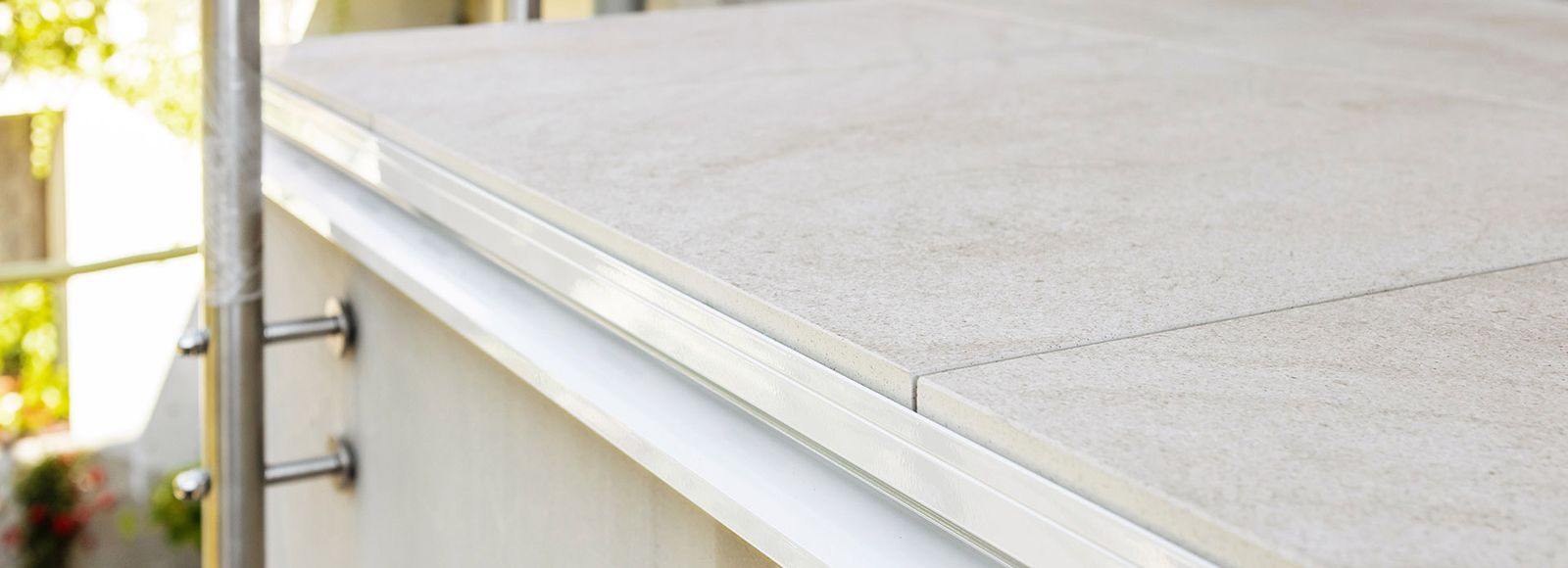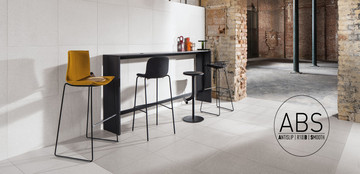The easy installation of the ceramic tiles on pedestals will allow you to readily get to the base.
It is not only the owners of small apartments who wish to give themselves more space in the form of a habitable roof, balcony or terrace. RAKO has come up with a novel approach where an ordinary floor can be simply converted into a design item with the new RAKO OUTDOOR tiles. The tiles, with a faithful wood or stone look and a reinforced thickness of 2 cm, can be laid dry without the use of any adhesive, on low terrace pedestals for example. The tiles feature excellent load resistance, the floor construction is lightweight, is almost maintenance-free and can be easily dismantled at any time. The RAKO OUTDOOR tile design allows you to connect to residential rooms and unify the transition from the interior to the exterior.
The 60 × 60 cm tiles 2 cm thick are frost-resistant and withstand outdoor load without major limitations. The RAKO Outdoor QUARZIT, SALOON, REBEL, PIAZZETTA and KAAMOS series sintered tiles are also suitable for use in pergolas, around swimming pools, or just as stepping stones incorporated into lawns, thanks to their fine relief and R11/B slip resistance. Their thickness and weight make them suitable for laying on plastic pedestals or directly in the ground, for example, in a lawn or gravel, without the use of any adhesive or grout. Thanks to digital printing technology, their quality and design are indistinguishable from the natural materials they imitate so faithfully.
Advantages of laying on pedestals
Laying on low fixed-height pedestals is a quick method with minimum maintenance requirements and trouble-free access to the base. The pedestal height cannot be adjusted by screwing, it is the same across the entire surface. Installing the floor is easy, the structure can be easily disassembled at any time. The pedestal spacers define exactly the joint, which is about 4 mm wide. This joint width is not disturbing, yet it ensures sufficient water outflow from the terrace.
How to lay tiles on fixed-height pedestals?
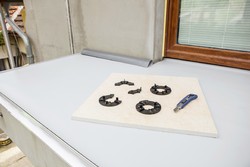 Prepare everything you need: Laying on pedestals is a method using supports (pedestals) and 2-cm tiles that withstand walking loads. As the base, we recommend using a waterproofing PVC sheet with a reinforcing grid, ≥1.5 mm thick. Underlay the PVC sheet with a geotextile to reduce the risk of the sheet being punctured by sharp tips on the concrete surface. The concrete slab should have a slope of 2% from the building. Entrust the sheet installation task to a professional because failure to follow the technological procedure may result in water leakage into the structure.
Prepare everything you need: Laying on pedestals is a method using supports (pedestals) and 2-cm tiles that withstand walking loads. As the base, we recommend using a waterproofing PVC sheet with a reinforcing grid, ≥1.5 mm thick. Underlay the PVC sheet with a geotextile to reduce the risk of the sheet being punctured by sharp tips on the concrete surface. The concrete slab should have a slope of 2% from the building. Entrust the sheet installation task to a professional because failure to follow the technological procedure may result in water leakage into the structure.
Another option for insulating and sealing the concrete body under the pedestals is to use a final waterproofing screed that resists water and sunlight. The product can be found in the RAKO SYSTEM range under the brand name SE2.
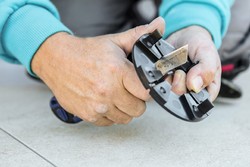
Pedestal adjustment: Adjust the pedestals and cut off the excess parts of the pedestals, spacers, which are not needed at the wall or at the laying corners.
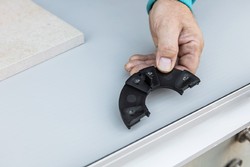
Pedestal laying: Start by laying the pedestals on the outer edge of the balcony. Before laying the tiles, check the distance between the pedestals to match the 60 × 60 cm tile size.
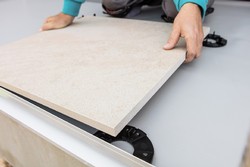 Tile placement: Place the tiles so that their fixed-height supports should support their corners.
Tile placement: Place the tiles so that their fixed-height supports should support their corners.
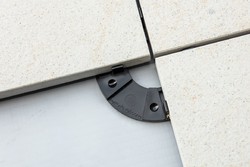
Surface: Use this procedure to install the tiles on the entire area. The spacers define the joint width necessary for water drainage and evaporation.
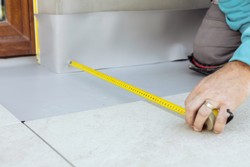 Measurement of the finish cuttings: Measure precisely the dimensions of the individual finish cuttings to the balcony door and wall.
Measurement of the finish cuttings: Measure precisely the dimensions of the individual finish cuttings to the balcony door and wall.
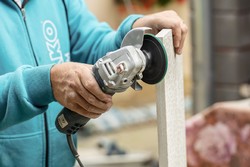 Preparation of the finish cuttings: The embossed 2 cm tiles can be cut only with electric cutting machines fitted with guide rails or with stand saws. Grind the tile edges with an angular grinder equipped with a grinding pad.
Preparation of the finish cuttings: The embossed 2 cm tiles can be cut only with electric cutting machines fitted with guide rails or with stand saws. Grind the tile edges with an angular grinder equipped with a grinding pad.
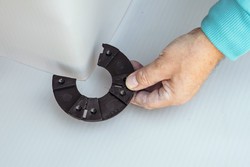
Placing the finish cuttings in the corners: Place the prepared pedestal into the corner and install the cut-out tile to where it belongs.
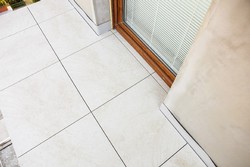 Connection of the cut elements: The cut ceramic pieces seamlessly connect to the door and balcony wall.
Connection of the cut elements: The cut ceramic pieces seamlessly connect to the door and balcony wall.
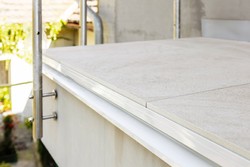
Finished: The balcony edges can be finished with a metal profile or bar. Laying on pedestals is suitable for terraces, balconies, roofs or public areas with easy access to drainage or waterproofing. Pavement with tiles laid on pedestals is unsuitable for vehicular traffic.
You can also watch the workflow in the video:








